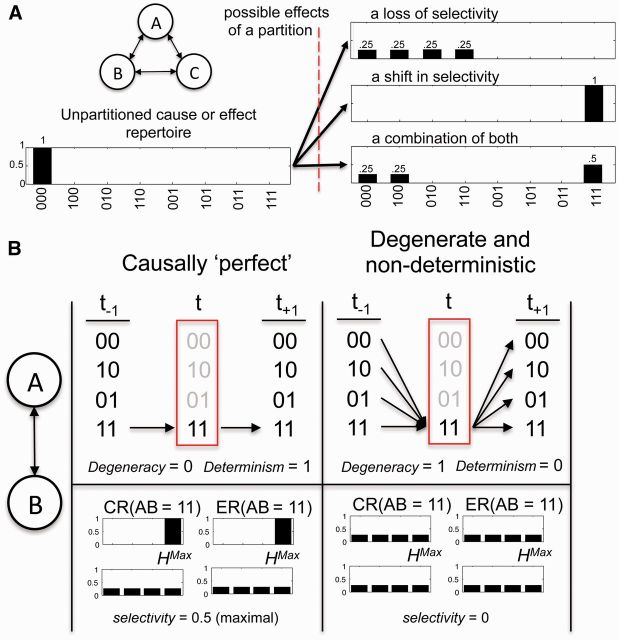Figure 1.
The causal components of integrated information (). (A) Consider a hypothetical isolated system constituted of three interconnected binary elements. The unpartitioned cause–effect repertoires of the system can change in several ways following a partition. There can be a loss of selectivity, moving the partition closer to maximum entropy (top), a shift in which states are selected in the partitioned repertoire (middle), or a mix of both (bottom). (B) Consider a simpler system of just two connected binary elements (left). If the mechanism AB in state [11] at t could only originate from [11] at t−1, and can only go to [11] at t+1, then degeneracy is 0 and determinism is 1. (B, top left) If AB in state [11] at t could have originated from any state at t−1, and could go to any state at t+1, all with equal probability (B, top right), the mechanism in state [11] has a degeneracy of 0 and a determinism of 1. Compare degeneracy and determinism to selectivity: the minimum distance of either the cause or effect repertoires from the maximum entropy distribution (H). In both cases, selectivity accurately reflects determinism and degeneracy (B, bottom).

